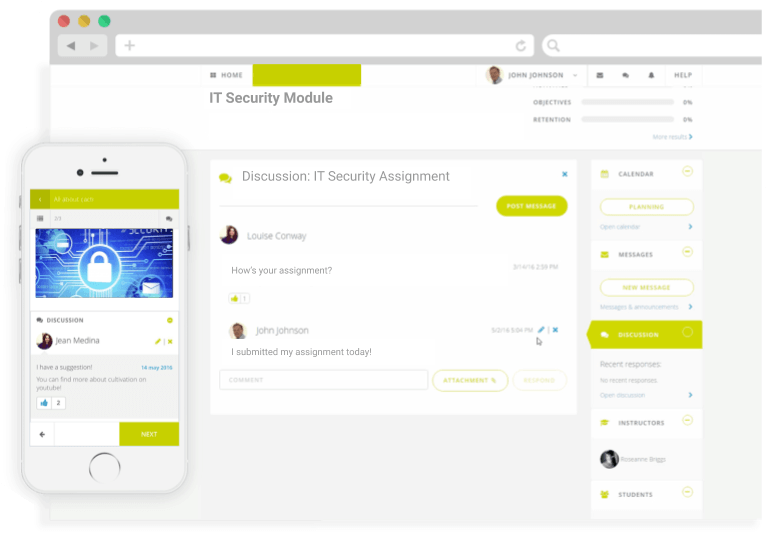What the Client Wanted
Problem:
The University had an existing IT Security Module for their Bachelor’s degree programme in IT, which had become outdated in its format, as it overemphasized the in-classroom activities, while a majority of students prefer studying in a flexible and convenient manner.
Solution Sought:
Shifting the content towards an online blended learning solution to lead to an increase in student engagement levels throughout the module.
What the Client Provided
1: The Legacy Module Outline – A document in which the description of the previous module was outlined.
2: The Literature – Literature related to the legacy module.
3: The description of their needs and wants – A basic description of their objectives, needs, and what they wanted us to support them with.
4: Review and revision by Subject Matter Experts.
The Content That We Developed
| Strategise | |
|---|---|
| Personal Account Manager | Project communication & timelines handling. |
| Revision Process Management | Customised revision. Batch content release for the client’s approval. |
| Content Matrix | Mapping learning objectives, topics, and literature for a spot on creative strategy. |
| Learner profiling | Guiding programme customisation through analysing programme-specific learners’ traits. |
| Design | |
|---|---|
| Storyboarding – Programme Flow | Engaging learners through effectively structuring curriculum content. |
| Sourcing Case Studies from the field | Allowing learners’ topic mastery by selecting challenging use cases and real-life scenarios. |
| Sourcing cutting-edge Video Script Content | Optimising learners’ growth by selecting elucidating insights from the latest studies. |
| Sourcing of state-of-the-art Literature References | Selection of the most relevant extracts from the literature that would maximise learning. |
| Immersion Methodology | Enabling learners’ topic immersion through a content-structuring methodology that delivers meaningful and experiential content. |
| Develop | |
|---|---|
| Engaging E-learning Content & Interactive In-classroom Content | |
| Programme Resources |
|
| Case Studies |
|
| Scriptwriting for Video |
|
| Retention Trainer |
|
| In-classroom Content |
|
The Result
